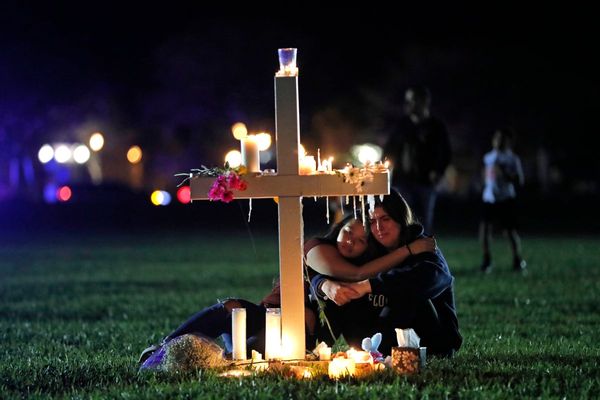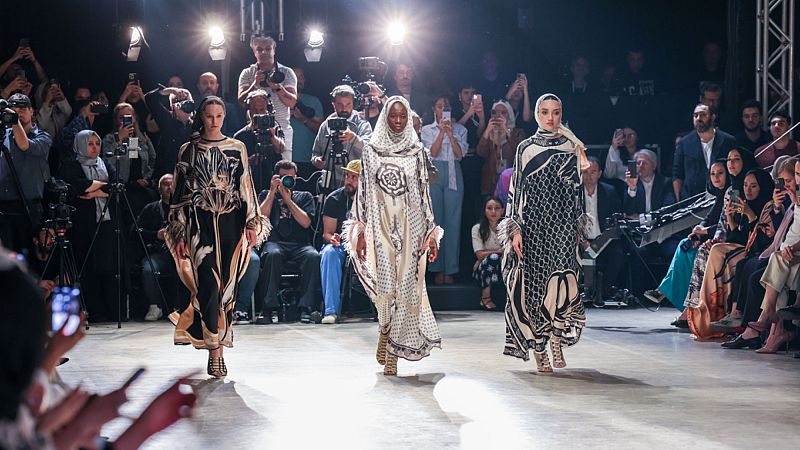
What you see as modest depends on who you are, the norms you grew up with and the ones you eventually decide to stick with.
As for the term modest fashion, it began to emerge in 2010 and went mainstream from 2015 onwards. Fast-forward a decade and Modest Fashion Weeks are cropping up around the globe, while a blossoming influencer scene burgeons in the background.
In 2024, TikTok even jumped on the modest bandwagon, with the word demure — which means "reserved, quiet, or modest" — going viral in a series of videos, before being branded Word of the Year by the website Dictionary.com.
At its core, modest fashion is about dressing stylishly in clothes that are not too revealing. For critics, the term is problematic — some don't like the word itself, while others refuse to accept the idea that women should abide by a certain dress code.
Driven by religious shoppers

“Women have dressed according to their personal understandings of modesty or in relation to community and religious conventions about appearance for centuries, through either making or purchasing clothes,” Reina Lewis, Professor of Cultural Studies at London College of Fashion told Euronews Culture.
Modest fashion today is firmly tied to religion and targets women. Muslim women are its biggest consumers — but other religious shoppers, as well as women in search of professional attire, buy in.
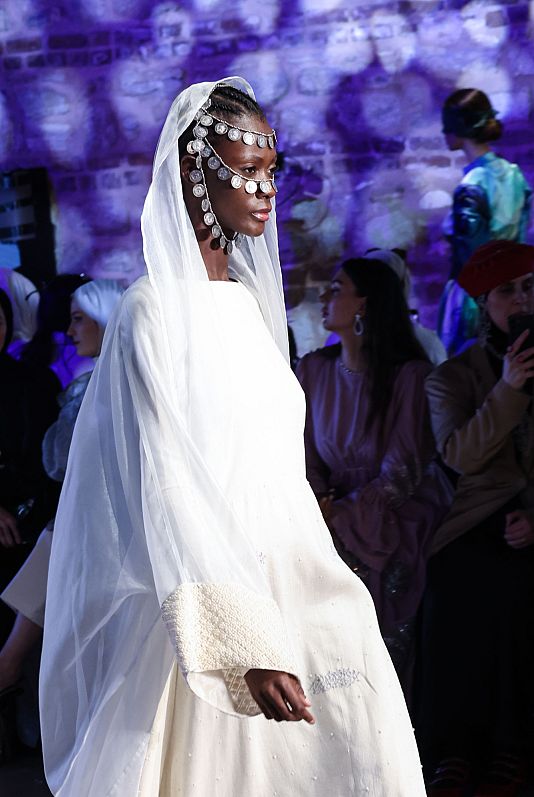
A significant proportion of the industry's most popular brands and influencers are based in the Middle East — a region in which many countries have a conservative dress code that is part of the status quo.
A study from The Global Islamic Report estimated that Muslim shoppers spent €287 billion on the industry in 2024, forecasting a market growth of €364.5 billion this year.
The sector has also been growing in Europe, sparked by a change in mindset in the mid-2010s. “Post 9-11, the fashion industry was averse to being associated with Muslim women. But from 2015 onwards, that began to shift“, according to Lewis.
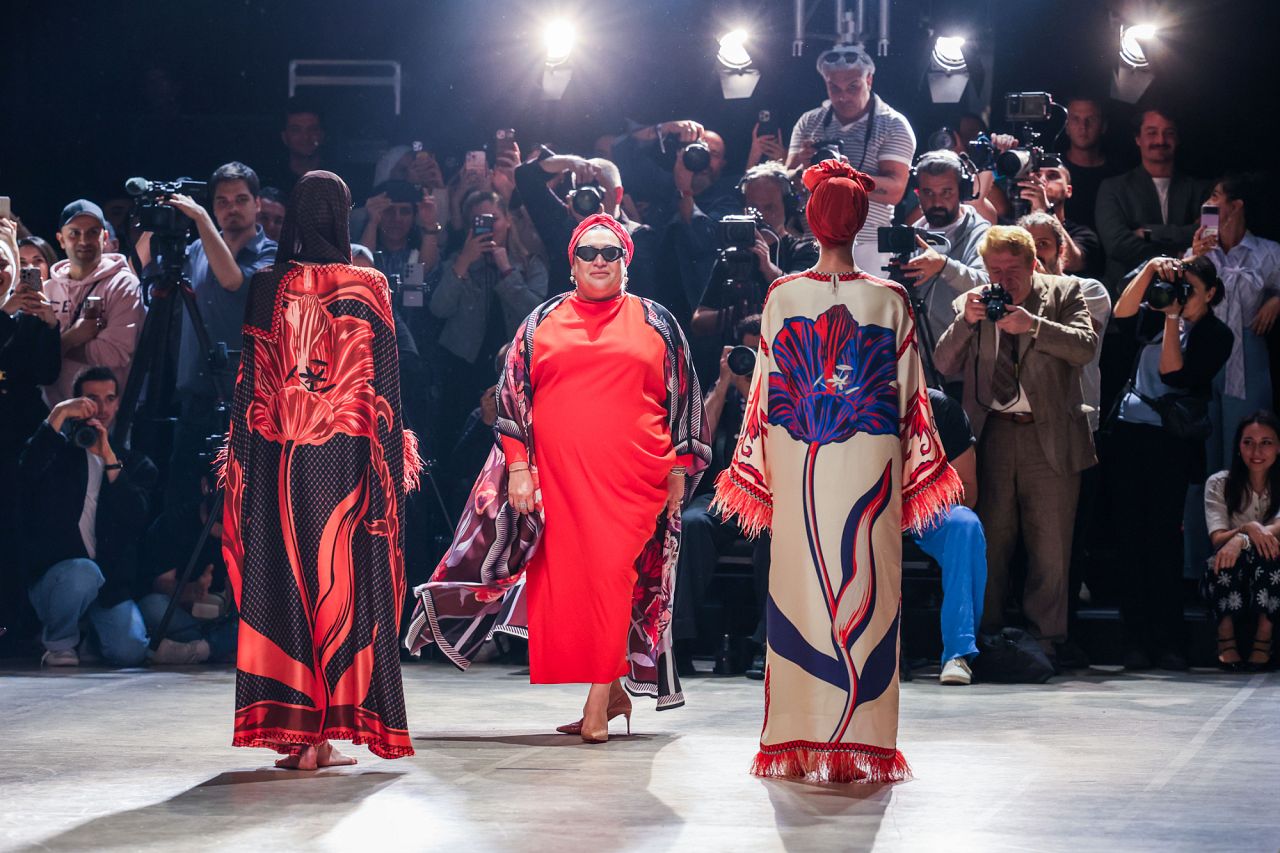
High street brands quickly got in on the action. In 2015, British-Japanese Muslim designer Hana Tajima launched a collaboration with Uniqlo in Malaysia, Singapore and Indonesia. This was the first time ever that hijabs were sold by the company, in a collection modelled by Malaysian pop star Yuna.
“From 2015 until around 2022, the modest aesthetic was having a fashion moment. Starlets and celebrities on the red carpet were more covered up. This is partly due to the constant turns in fashion trends, but it was also tied to brands noticing a new style community emerging,” explained Lewis.
Fashion goes in cycles
In 2018, supermodel Halima Aden, aged 20-years old at the time, became the first woman with a hijab to star on the cover of British Vogue — under the editorial leadership of Edward Enninful who ushered in a fresh set of diverse fashion professionals when he was appointed in 2017.
Although the cover was viewed as a landmark moment for the Western fashion industry, shortly afterwards Haden announced she was embarking on a three-year career break, citing difficulties reconciling her faith and work.
Fashion moves in cycles, and after the Covid-19 pandemic, trends swung in a different direction. "Dresses that cling to the body, that have cut outs around the ribs and the edge etc. were back in [style] once again", Lewis told Euronews Culture.
As a 2019 study found that 86% of Muslim women reported feeling “ignored” by high street fashion in the UK, many women from religious backgrounds turned to entrepreneurialism to fill the gap in the market.
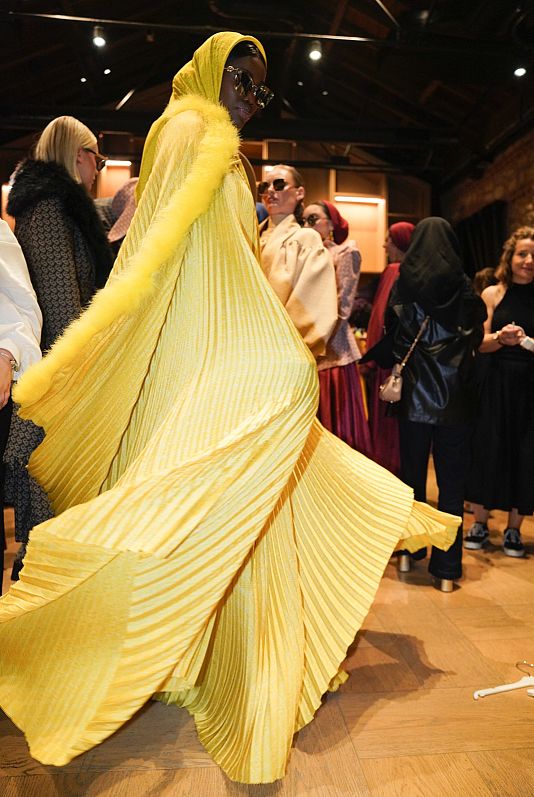
"They started up their modest fashion lines and found they appealed to consumers from other religious communities, as well as non-religious shoppers because of the easiness of online shopping," said Lewis.
The rise of modest fashion weeks and influencers
In 2016, Turkish fashion consultant Ozlem Sahin Ertas founded the Think Fashion Group, which has been investing heavily into the modest fashion industry for close to a decade.
Ertas comes from a Muslim family and told Euronews Culture: “My mum doesn’t wear a hijab but she dresses modestly. She was having to go to a tailor to make her clothes. I couldn't stand seeing how much she was spending on having alterations and I also wanted her to be able to wear clothes she liked and was proud of."
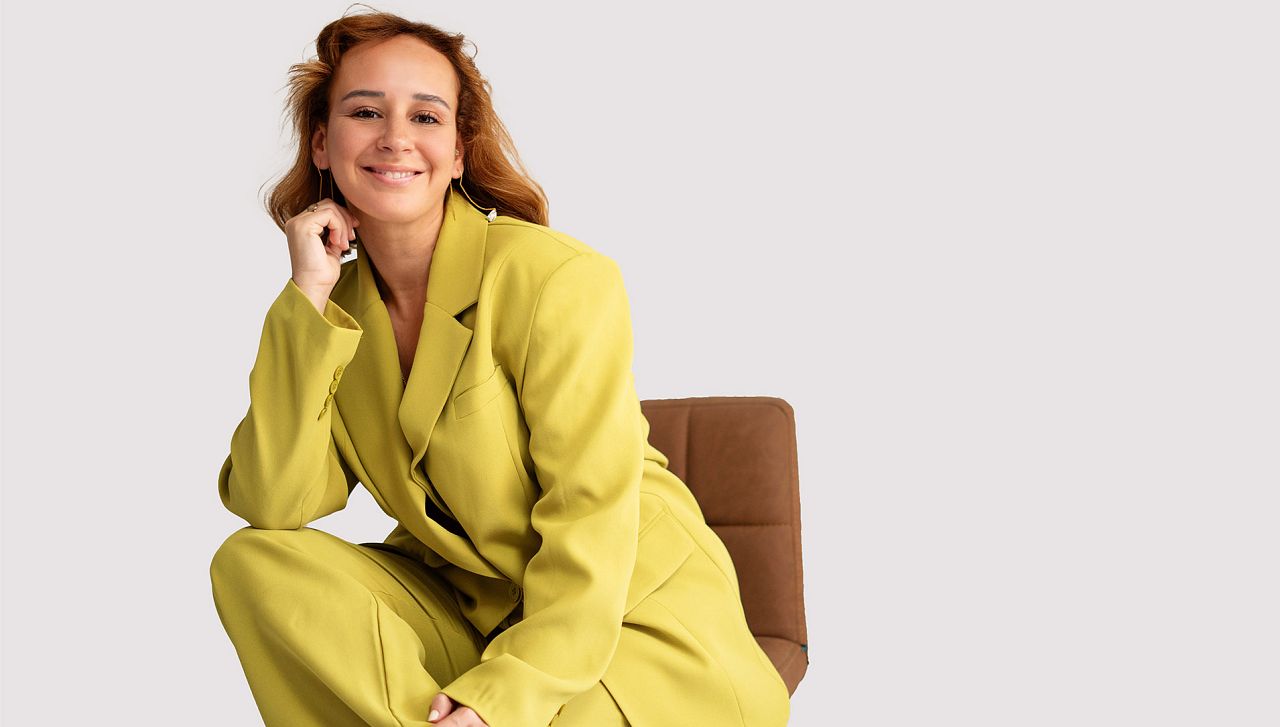
This led Ertas to come up with the idea of the “Modest Fashion Week”, in a bid to create a space for industry professionals to exchange ideas.
"Paris Fashion Week is all about designers competing to buy competitive slots, our Modest Fashion Week revolves around fostering new talent", said Ertas.
Participating designers are provided with all-inclusive services for photography, videography, choreography, show direction and models — with this year's edition taking place in Riyadh, Saudi Arabia, this week.
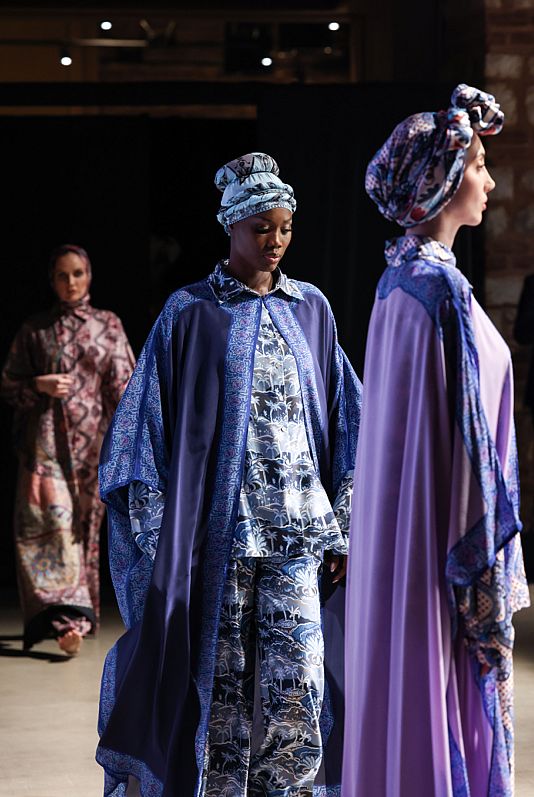
After working in the industry for more than a decade, Ertas has become tired of having the same discussion: "We are not speaking about Muslim or hijab fashion or Islamic fashion, but the discussion always comes back to that."
The fashion consultant opposes the use of the word conservative, which is often considered an alternative to the term modest.
"The British royal family abides by a formal dress code," concluded Ertas, in a bid to underline that modesty can be part of Western customs.
A shift in marketing
Although it continues to grow in popularity, the term modest fashion has been singled out as a marketing ploy, sometimes repurposed for existing clothing lines.
In 2015, DKNY launched a special Eid collection — marketed specifically in the Gulf — that became a viral success.
“DKNY used existing items from their collections, but got two popular Middle East bloggers, Yada Golsharifi and Tamara Al Gabbani, to style the items. This allowed DKNY to get a huge amount of social media traction and for women from around the world to see the clothes,” said Professor Lewis.
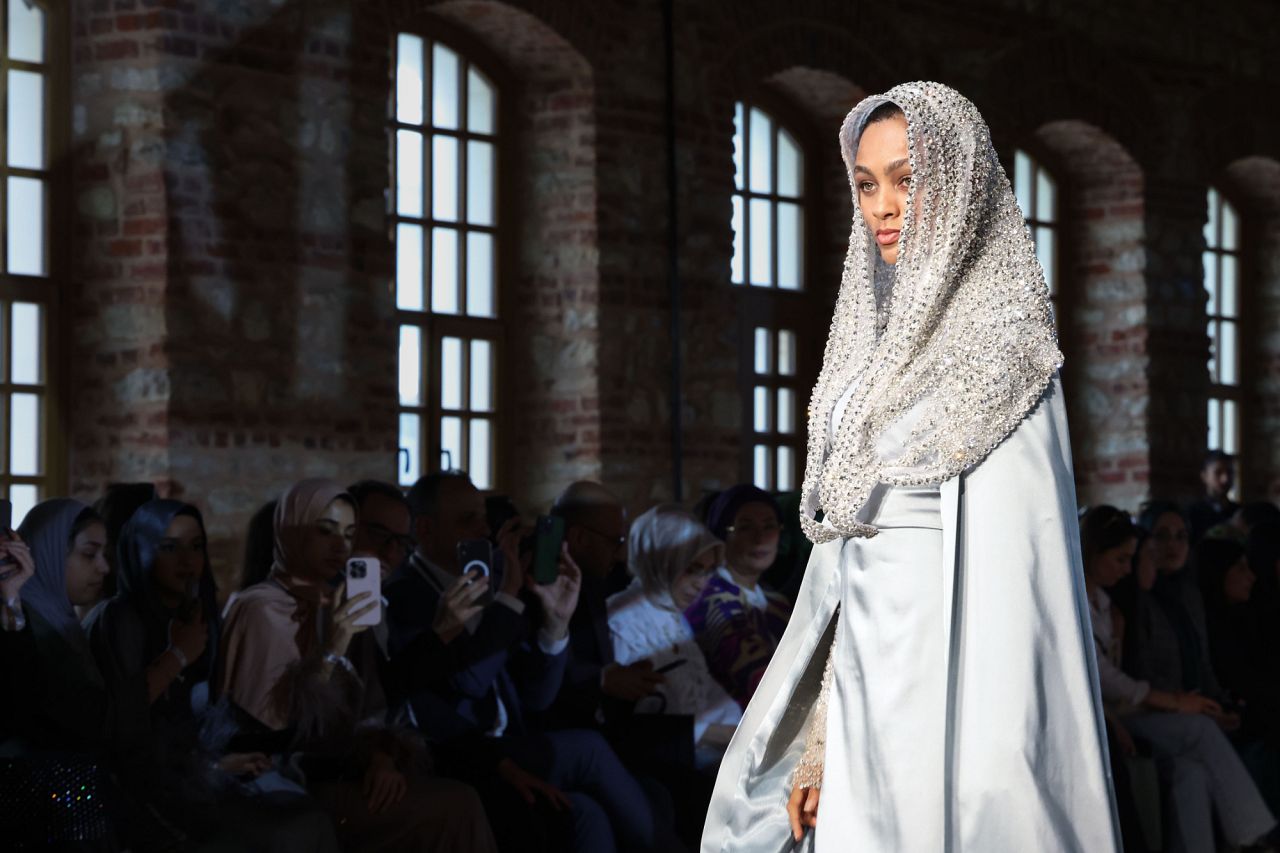
By using existing items from their collections, DKNY wanted to test the waters and see if these types of collections would sell, “it's not surprising that a brand might start out with a marketing initiative that costs a lot less than designing and manufacturing a whole new range”, adds Reina Lewis.
Other brands have attracted more criticism than praise. In 2019, Banana Republic attempted to introduce modest fashion to their catwalk collections, but instead sparked a backlash for presenting models who wore headscarves alongside loose fitting clothes.
"If you want to work with a demographic that maybe you're not an expert in or don't have a background in, just work with them," Mariah Idrissi, a Pakistani-Moroccan model, told Euronews Culture.
Idrissi was the first woman to model a hijab for H&M in 2015, scouted while working at one of their London shops. Following this, she became the first hijab-wearing model to sign with renowned agency Select Models.
For Idrissi, the modest fashion movement has also garnered some criticism — especially from within religious communities: "Some Muslims were confused at the advent of modest fashion, because they felt 'this is a contradiction'. For them, the hijab represents modesty, which for them doesn't align with modelling or the fashion industry."
Critics: why should women dress modestly?
Some Western secular women, as well as certain feminist thinkers, have branded the term modest as problematic — pointing to the fact it can be used in political settings as a tool of control over women.
When 22-year old Mahsa Amini was arrested in September 2022 by the Iranian morality police for allegedly not wearing her hijab correctly, she was accused of breaking the country's laws by dressing "immodestly" in public.
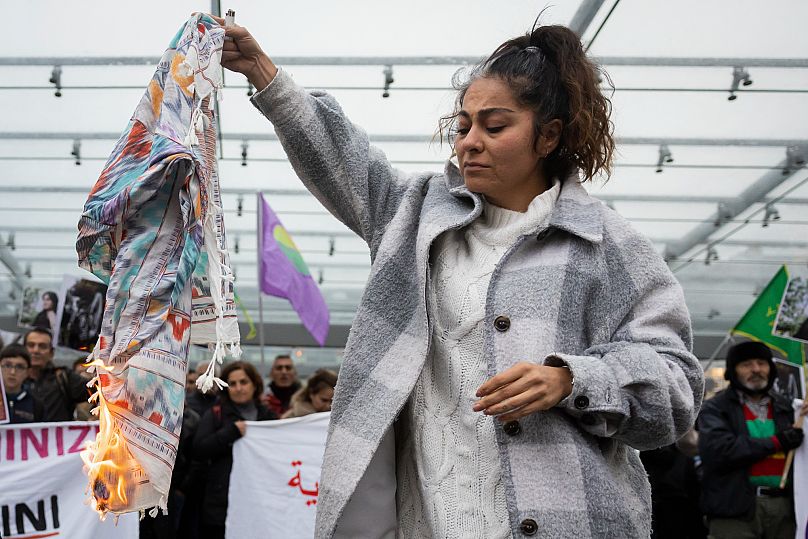
Her death in custody sparked a wave of protests — and a crackdown on women dressing modestly in accordance with the religious standards in place since 1981 in Iran.
Others argue that modesty is incompatible with women's liberation, opposing the concept with clothing pieces that played a part in freeing Western women's bodies, such as British fashion designer Mary Quant's 1960s mini-skirt.
Feminist writer Jessica Valenti has claimed that all modesty advocates are anti-feminist, stating: "So modesty gals, if you want to push for a new generation of chaste, obedient girls who bake apple pies (seriously that's in there), go for it."
Professor Lewis believes that critics take issue with the connotations of modest. "Some women don't want to be associated with a word which means self-deprecating, humble and not assertive."
This distaste was reflected in a customer backslash, which occurred in 2018 when British fashion brand Marks & Spencer faced angry shoppers after it labelled some of its swimwear collection "modest."
“They had modest fashion or modesty as a search term on their website. They weren’t making new garments but tagging existing ones, this generated a controversy because shoppers said “I don’t consider myself immodest, is that what they’re telling me I am?", added Lewis.
How modesty went viral on TikTok
The concept of female modesty went viral on social media in 2024 after content creator Jools LeBron used the phrase “very demure, very mindful" in a video that has since garnered more than 55 million views.
Although some users took LeBron's words literally — as though she was promoting a certain kind of respectful behaviour — her tone was one of sarcasm.
LeBron was in fact taking aim at influencer trends like the Clean Girl aesthetic and Old Money trend — which value minimalism and class aspiration — in a bid to criticise society's obsession with female conformity.
Many would argue that this philosophy is at the heart of the modest fashion movement. "Women who are part of the modest fashion movement would say they are not dressing to judge other women — but instead, for themselves," concluded Lewis.



